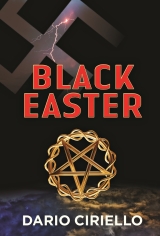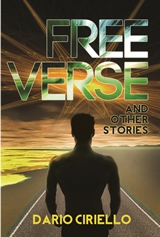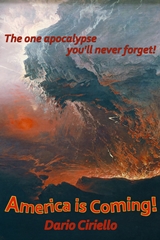I’ve always found plotting very difficult. After several years of writing, I finally realized why: it’s because I didn’t know my characters.
Plot doesn’t exist in a vacuum. Plot is what happens when a character with a goal runs into opposition. The resulting conflict gives birth to plot.
I’m mostly what my author friend Janice Hardy (‘The Pain Merchants’ trilogy) calls a pantser—that is, I write mostly by the seat of my pants rather than by careful advance plotting and outlining. In the past that’s gotten me into an awful lot of trouble, with stories ending up irrevocably beached like ships on sandbars. I’d read books on Plot but they never made sense to me—they seemed mechanistic, dead, formulaic, with all those silly graphs showing the story’s various complications and crises rising in a series of arcs to the Supreme Black Moment at the story’s climax. I railed against these. Dammit, Jim, I’m an artist, not a mathematician!
After a while, I started not exactly outlining but making sure I knew both the endpoint of my story and at least a couple of waypoints. Like fences along a racetrack, these would at least keep me going in the right direction to the finish line, wouldn’t they? The strategy was partly successful: I’d reach the end, yeah, but the story took a lot of manipulation and heavy-handed steering, and it showed. “It feels like it’s on rails,” a critiquer once told me about a story I’d worked particularly hard to keep on track.
After some long while of my puzzled and patient colleagues in Written in Blood talking to me about character, the penny started to drop. I’d had, over a few years, a couple of stories published that worked very well. Flashes in the pan? No: in both of these, I understood the protagonist and their goals very well.
It’s amazing to me how slow and stupid even smart people—I consider myself one—can be sometimes… the puzzle wasn’t together yet, but I was starting to find how some of the pieces fit in.
What I think finally made all the pieces click into place was reading (and rereading, and re-rereading) Stephen King’s excellent little book, ‘On Writing: A Memoir of the Craft’, in which he confesses that he doesn’t plot and doesn’t believe in plotting. This was a revelation to me, because I really didn’t either. I was vindicated! And yet, King’s stories were full of plotting, of complications and reversals, of ever-rising series of crises from start to finish. But no, he insisted his stories were based on situations and that he relied heavily on intuition. His process, he swore, was to “put a group of characters (perhaps a pair; perhaps even just one) in some sort of predicament and then watch them try to work themselves free.” The key words here were character and predicament.
Another writer I immensely respect, C.J. Cherryh, has a particularly luminous sentence on plotting in her blog. She says, “I think of it not as anything like a sequence of events, but as a webwork of tension-lines between characters and sets of characters. You pull one—and one yank moves several characters. It’s not events. It’s tensions.”
In my current novel-in-progress (working title: ‘Sutherland’s Rules’) I tried to put these ideas into practice. I thought long and hard about my principal characters, wrote little bios for them, made up backstory; most important of all, I worked hard at understanding their conscious and subconscious goals and motivations, hopes and fears, and the relationships between the protagonists; I did the same for the antagonists. With this done, I built not an outline but a very loose plot exoskeleton, as it were, roughly based on the typical Campbellian Hero’s Journey-type structure. And then I turned everyone loose.
To my amazement, what resulted was a complex and very tightly-plotted story as the protagonists, opposed by their antagonists and forced to work within some tight real-world parameters (windows of opportunity, seasonal factors, physical limits of mass and velocity that bear on their scheme), used all their ingenuity and resources to achieve their goals. By taking the time to breathe real life into my characters, they came alive and worked to achieve their ends without any manipulation or heavy-handed effort on my part. The result is something close to a Swiss watch, far more tightly plotted than anything I could have envisioned, and without ever resorting to what King calls, ‘the noisy jackhammer of plot’: I’d put my characters into a predicament and watched them work themselves free, chronicling their progress as they went.
When I sent the first draft out to my trusty and stalwart beta readers they confirmed what I’d thought—I’d broken into fresh territory and mostly achieved my goals; there was even some excitement. Oh, there were a few issues, but—and this confirmed my new understanding—these were mostly to do with a couple of characters whom I’d not understood fully enough, and neglected to develop as thoroughly as my two chief protagonists. So in the rewrite, which I’m currently in the middle of, I’m putting the same effort into fleshing out and thoroughly knowing these other characters, confident that this will lead them to act as real, fully-empowered people; the result, I’m quite confident, will be to transform and elevate those parts of the story which aren’t working so well. Beyond that are a few simple environment and situation factors that require tweaking.
So, in the end, there really is no such thing as plot as a cause or driver: plot is simply the result of character and will in motion.









Pingback: Top Picks Thursday 05-31-2012 « The Author Chronicles
Seems like I just need this reminder to get my story going. x)
Heh heh. Thanks for commenting, Gem, and I hope it does the trick! I definitely find that once the characters are fully alive and breathing and I have a setup, things start to happen. 🙂
Love this post, Dario! This so rings true for me too and Cherryh nails it; plot is about tensions, not events.
Some of my friends really enjoy plotting, but I’m too much in love with ‘winging it’ to be a plotter – apart from always having an ‘end’ in mind, whether for short stories or the novels. The ‘getting there’ is instinct and passion, for me, and an adventure…and yes, if you’re writing from inside the characters and you know them really well, their inner and outer strengths and stumbling blocks will dictate the plot to you, and if they’re complex types they’ll throw in a few surprises too! 🙂
Jo, thanks for pitching in (I’d have answered sooner but was at a con, and taking an internet break). That’s so true about surprises: a living, breathing character IMO is often more canny and creative than any string-pulling author puppeteer…
You’ve hit a chord here, Dario. 🙂 Great post (and of course I love that you’ve slipped in some sailing terminology). “Waypoints” as opposed to plot structure make sense to me as well. I came across a reference recently to “authorial ecosystem” (coined by Chuck Wendig with reference to indie-publishing) that also resonates with what you’re talking about … a story needs room to grow, to branch out, to diverge and evolve but I know from hard-won experience, that if you don’t know your destination, you’ll end up getting lost. Have a start and end point…then the story is the journey, or vice versa.
Lyn, thanks for commenting. They do grow and diverge; and though the actual end point, once you set characters loose, may turn out to not be the one envisaged, I think most of us need some goalposts, a target zone. As characters come to life, adjustments, both forward and backward, will need to be made. The exoskeleton I mentioned wasn’t even an outline, just an awareness of the general Campbellian trajectory. It was necessary for me since I have trouble keeping sight of larger arcs and structure over the course of anything more than a short story. I suppose eventually it all becomes reflex.
Dario,
I can say, without empty flattery, that of all the writer’s blogs I’ve read and followed, yours hits home the most for me. I live by the same motto: that well developed characters will develop their own plot.
Charles–thank you so much, I’m glad it resonates. It sounds as though you’ve followed a similar learning trajectory? The irony of course is that learning takes place in its own sweet time. I imagine I’d read this stuff somewhere years before I got it, but didn’t have the maturity, perhaps, to trust or apply it. Decades ago, when I was for a while a T’ai Chi teacher, it became apparent to me that a teacher’s role is primarily one of waiting and watching–it’s all in the timing. The student has to be ready and developed enough to assimilate the info you give them. Which is one reason to not be afraid of sharing or being generous with advice… the secret (if there ever is one LOL), protects itself.
Hey, Dario… I like this very much. Would it be possible to reprint this is an upcoming issue of Bewildering Stories?? With link to your blog, of course.
–Jerry
Thanks, Jerry! And, of course you may–I’d be honoured! 🙂
yes 🙂 I like this – very much. Shall take it to heart 🙂
Glad it was useful, MT–are you a pantser like me? 🙂
pantser?
Pantser: one who writes by the seat of the pants (as opposed to plotter, or outliner).
Laughing!!! YES OH MY GOD YES!!! Including, she admits wryly & wiping the sweat from her brow, her PhD exegesis!
Whoa!! Let me know how that one turns out. Do you know your protag inside out? 😉
yeah – mostly, but chasing down errant quotes is a pain in the proverbial! and putting into words what I think & know s proving frustratingly difficult.